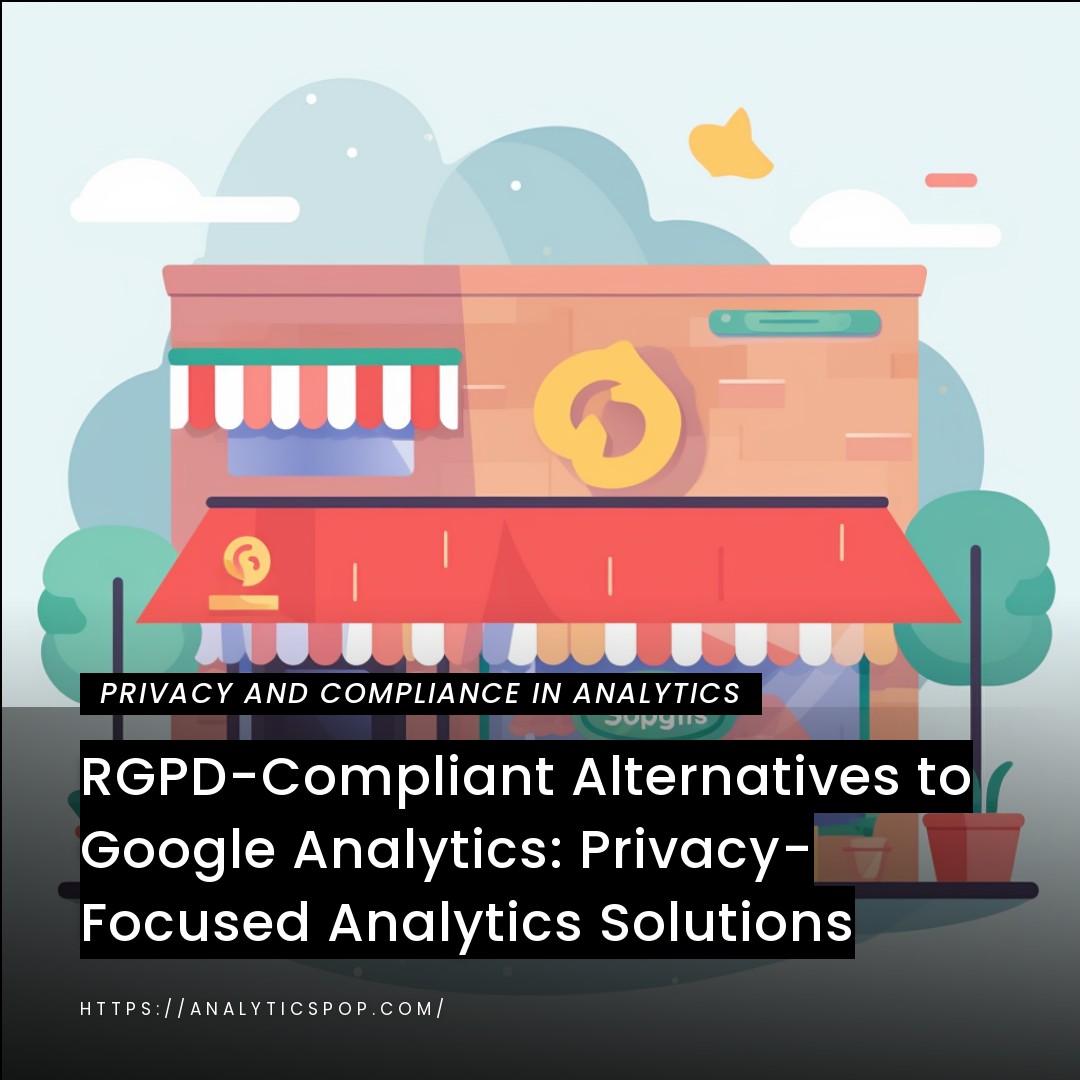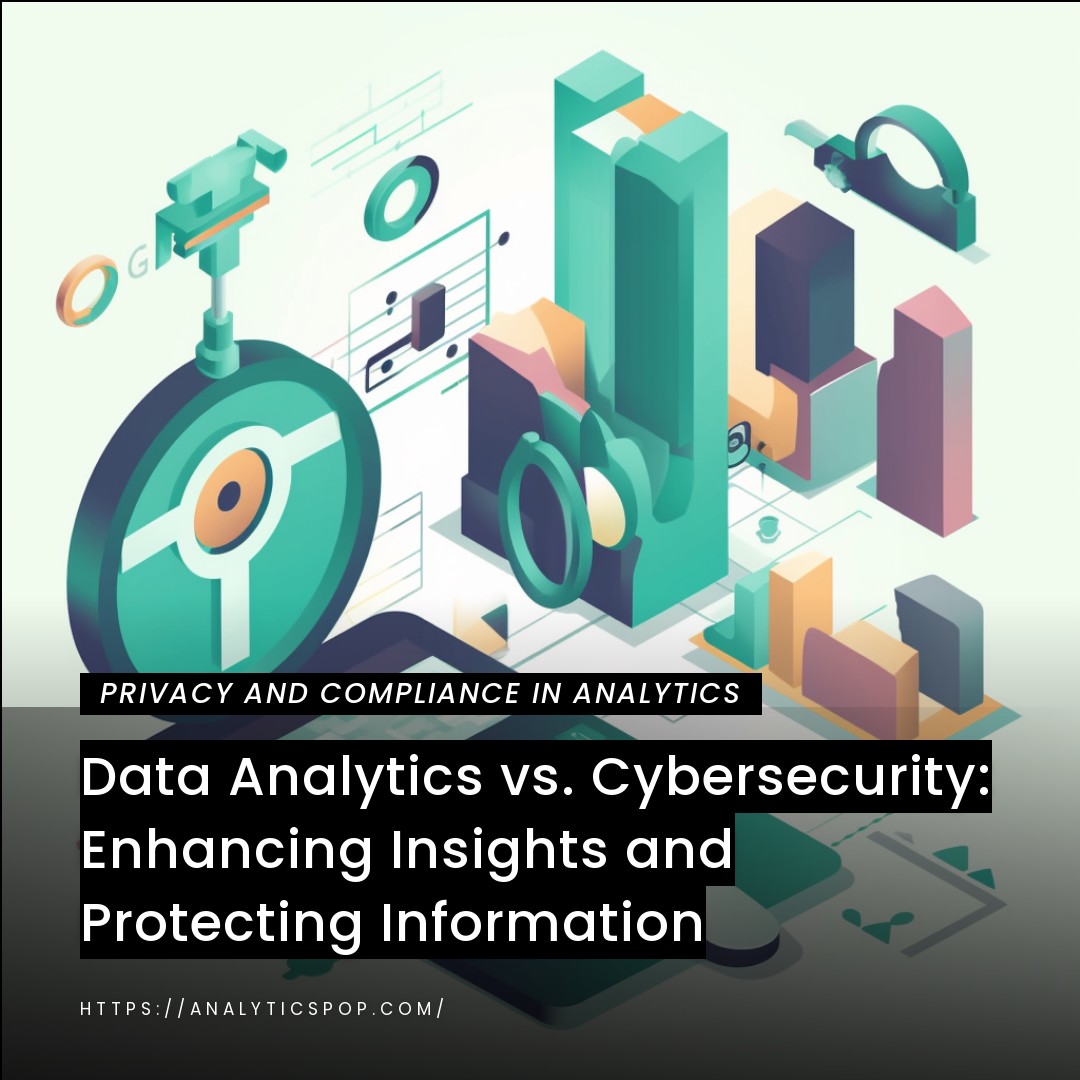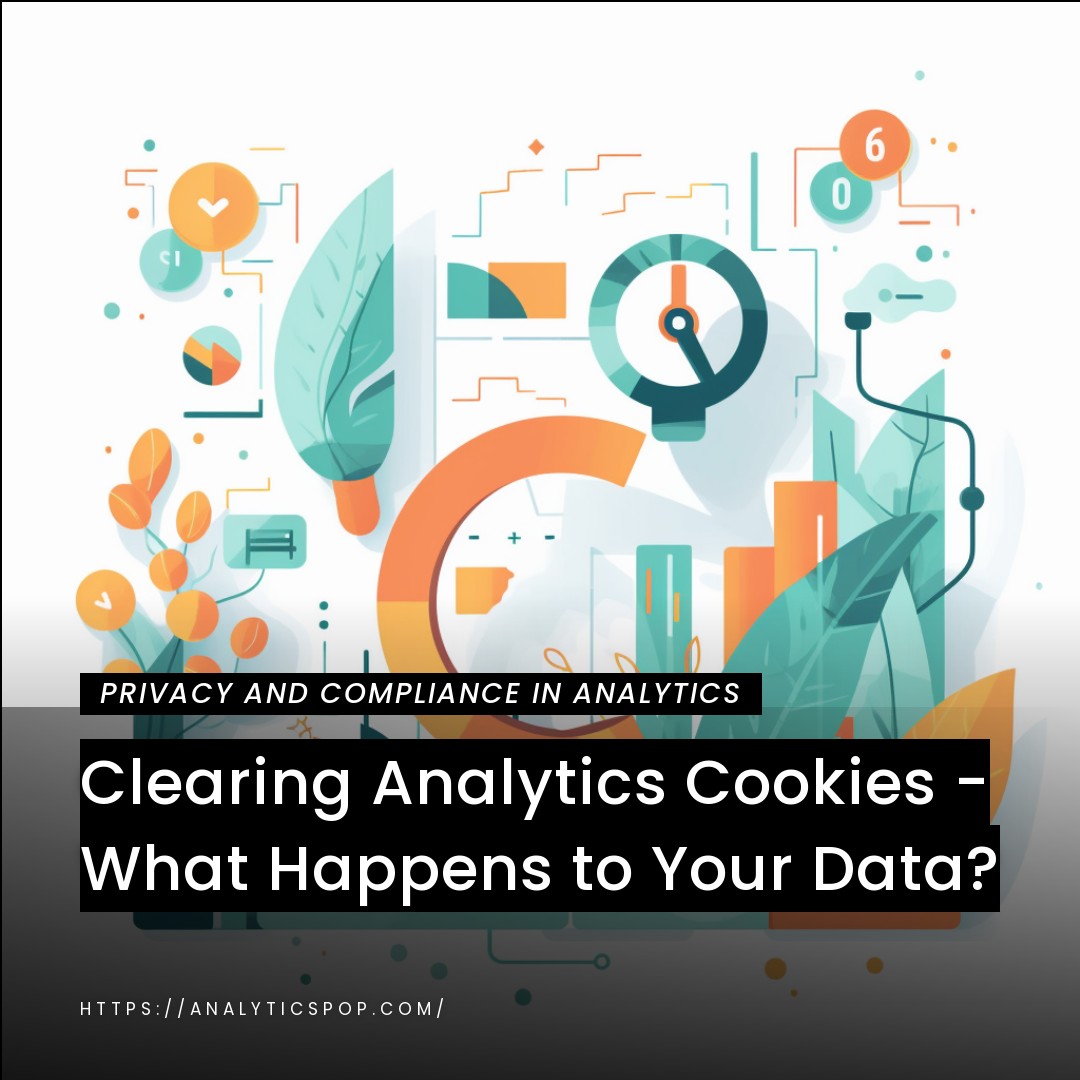Protect User Privacy: Explore RGPD-Compliant Alternatives to Google Analytics
Protecting user privacy is of utmost importance in the digital age. With increasing data collection and usage concerns, exploring GDPR-compliant alternatives to Google Analytics is crucial. One such alternative is Matomo (formerly known as Piwik), an open-source web analytics platform that prioritizes data privacy.
Matomo offers similar functionalities to Google Analytics, allowing website owners to track visitor behavior, analyze traffic sources, and measure conversions. However, what sets Matomo apart is its commitment to data protection. It enables you to host the analytics software on your own server, ensuring complete control over the collected data.
Another notable alternative is Clicky, a real-time web analytics tool. Clicky offers anonymized and GDPR-compliant tracking options, providing website owners with essential insights while respecting user privacy preferences. It also emphasizes data visualization, making it easier to understand and interpret website analytics.
By adopting these GDPR-compliant alternatives, website owners can protect user privacy without compromising valuable analytics data. These solutions demonstrate that it’s possible to gather meaningful insights while respecting user rights and reinforcing trust between businesses and their audience.
What are Privacy-Focused Analytics Solutions?
Privacy-focused analytics solutions have become essential for businesses seeking to balance data-driven insights with user privacy in today’s digital landscape. These solutions prioritize protecting user information while providing valuable data to inform strategic decision-making. Let’s explore a few popular privacy-focused analytics solutions that are gaining traction.
One prominent solution is DuckDuckGo Privacy Essentials. Known for its privacy-focused search engine, DuckDuckGo also offers a browser extension that blocks third-party trackers, providing users with a more private browsing experience. While not a comprehensive analytics tool, it aligns with the growing demand for privacy-centric solutions.
Another notable option is Matomo (formerly Piwik), an open-source web analytics platform mentioned earlier. Matomo enables website owners to collect and analyze data while maintaining full control over user information. By self-hosting the software, businesses can ensure compliance with data protection regulations, such as the GDPR.
For those seeking a simplified analytics solution, Simple Analytics is worth considering. It provides essential website metrics without the use of cookies or collecting personal data. Simple Analytics offers a clean and straightforward dashboard, making it easy to access key insights while respecting user privacy.
These privacy-focused analytics solutions demonstrate a shift towards more transparent and respectful data practices. By implementing these tools, businesses can gain valuable insights while honoring user privacy preferences, building trust with their audience, and contributing to a privacy-conscious digital ecosystem.

Understanding the importance of RGPD (GDPR) compliance in analytics
RGPD (GDPR) compliance in analytics is paramount for several reasons. The General Data Protection Regulation (GDPR) is a comprehensive data protection law that aims to safeguard individuals’ privacy and personal data within the European Union (EU). Compliance with GDPR is crucial for analytics practices for the following reasons:
- Legal Compliance: GDPR has introduced strict regulations and guidelines concerning collecting, processing, and storing personal data. Analytics processes involving user data must adhere to these regulations to avoid legal repercussions, such as fines and penalties.
- User Trust and Transparency: GDPR emphasizes transparency and user consent. It empowers individuals to control their data and how it is used. By complying with GDPR in analytics, organizations demonstrate their commitment to respecting user privacy rights, fostering trust, and maintaining a positive reputation among users.
- Enhanced Data Security: GDPR compliance necessitates implementing robust data security measures to protect personal data from unauthorized access, loss, or breach. Organizations can mitigate risks, safeguard sensitive information, and prevent data breaches by prioritizing data security in analytics practices.
- Improved Data Governance: GDPR compliance requires organizations to maintain proper documentation, data mapping, and records of data processing activities. These practices promote accountability, ensuring that analytics processes are conducted in a structured and responsible manner.
- Global Impact: Even if an organization is based outside the EU, it may still need to comply with GDPR if it processes the personal data of EU residents. Many countries have implemented similar data protection regulations influenced by the GDPR, making compliance essential for international operations and cross-border data transfers.
- Business Opportunities: GDPR compliance can present new business opportunities. Organizations prioritizing user privacy and implementing transparent analytics practices may attract privacy-conscious customers, gain a competitive advantage, and build stronger relationships with their target audience.
By understanding the importance of GDPR compliance in analytics, organizations can align their practices with privacy regulations, enhance user trust, and ensure responsible data handling. It is crucial to stay up to date with evolving regulations and continually evaluate and adapt analytics processes to maintain compliance and protect user privacy.
Benefits of privacy-focused analytics for data protection and user privacy
Privacy-focused analytics brings several benefits for data protection and user privacy. Let’s explore some of these advantages:
- Enhanced User Trust: Privacy-focused analytics solutions prioritize user privacy, demonstrating a commitment to protecting personal data. By using these solutions, organizations can build trust with their users, who are increasingly concerned about how their data is collected, stored, and used.
- Compliance with Regulations: Privacy-focused analytics align with data protection regulations such as the GDPR. By implementing these solutions, organizations can ensure they adhere to legal requirements, avoiding potential fines and penalties associated with non-compliance.
- Minimized Data Collection: Privacy-focused analytics solutions often employ techniques that collect only essential data, minimizing the collection of personally identifiable information (PII). This approach reduces the risk of storing sensitive data and enhances user privacy.
- Anonymization and Aggregation: Privacy-focused analytics prioritize anonymization and aggregation of data. Organizations can derive insights from aggregated data without compromising individual privacy by removing or obfuscating personally identifiable information.
- User Empowerment: Privacy-focused analytics solutions often give users control over their data. They allow individuals to opt-in or opt-out of data collection, manage their privacy preferences and exercise control over their personal information.
- Data Security Measures: Privacy-focused analytics emphasize robust data security measures to protect user data from unauthorized access, breaches, or misuse. Encryption, secure storage, and access controls are key components of these solutions, ensuring data protection.
- Transparency and Consent: Privacy-focused analytics promote transparency by providing clear data collection and usage information. They seek user consent before collecting or processing data, respecting individual choices and preferences.
- Trustworthy Data Sharing: Privacy-focused analytics solutions facilitate secure and privacy-conscious data-sharing practices. Organizations can share aggregated and anonymized data for research, collaborations, or industry insights, preserving individual privacy while contributing to collective knowledge.
- Ethical Data Practices: Privacy-focused analytics prioritize ethical data practices. By considering the privacy and rights of individuals, organizations can foster a culture of responsible data handling, promoting ethical decision-making throughout the data lifecycle.
- Competitive Advantage: Privacy-focused analytics can provide organizations with a competitive edge. By prioritizing user privacy, organizations can differentiate themselves in the market, attracting privacy-conscious customers who value data protection.
By leveraging privacy-focused analytics solutions, organizations can balance deriving valuable insights and protecting user privacy. These solutions comply with data protection regulations, empower individuals, and build trust, promoting responsible and ethical data practices in today’s digital landscape.

Popular RGPD-compliant analytics platforms
Several popular RGPD-compliant analytics platforms offer unique features and capabilities to help organizations meet their data protection obligations. Here are some well-known platforms:
- Matomo (formerly Piwik): Matomo is an open-source analytics platform that gives organizations full control over their data. It offers features similar to Google Analytics, including visitor tracking, conversion tracking, and campaign analytics. Matomo can be self-hosted, ensuring data stays within the organization’s infrastructure and facilitating compliance with GDPR requirements.
- Snowplow Analytics: Snowplow Analytics is an open-source event data collection and analytics platform. It enables organizations to capture, process, and analyze event-level data in a privacy-friendly manner. Snowplow provides flexibility to build custom analytics pipelines and integrates well with other data platforms and services.
- AT Internet: AT Internet is a European web analytics platform that is designed with data privacy in mind. It offers various analytics features, including audience measurement, real-time monitoring, and conversion tracking. AT Internet provides GDPR-compliant data processing, data retention, and user consent management capabilities.
- Matomo Cloud: Matomo Cloud is the hosted version of the Matomo analytics platform. It offers the same features as the self-hosted version but eliminates organizations needing to manage the infrastructure. Matomo Cloud ensures data sovereignty by storing data in dedicated servers located in GDPR-compliant data centers.
- Heap Analytics: Heap Analytics is a user behavior analytics platform that focuses on capturing and analyzing user interactions on websites and mobile apps. It provides GDPR-friendly data collection practices, such as anonymization and user data deletion capabilities.
- Mixpanel: Mixpanel is a product analytics platform that offers event tracking, funnel analysis, and user segmentation capabilities. Mixpanel provides GDPR-compliant features like data deletion, data retention policies, and user consent management options.
- Clicky: Clicky is a real-time web analytics tool emphasizing user privacy and GDPR compliance. It offers features such as heatmaps, goal tracking, and campaign tracking while providing anonymized data collection and user opt-out options.
When selecting an RGPD-compliant analytics platform, organizations should consider their specific needs, data protection requirements, and the platform’s features and capabilities to ensure a suitable fit for their analytics and compliance objectives.
Top Privacy-Focused Analytics Solutions
Several top privacy-focused analytics solutions have gained popularity due to their strong emphasis on data protection and user privacy. Let’s explore some of these leading solutions:
- DuckDuckGo Privacy Essentials: Although primarily known as a privacy-focused search engine, DuckDuckGo offers a browser extension called Privacy Essentials. It blocks third-party trackers, increases encryption protection, and provides a Privacy Grade rating for websites, allowing users to understand better and control their online privacy.
- Matomo (formerly Piwik): Matomo is an open-source web analytics platform allowing organizations to host analytics software on their servers. This self-hosting capability provides complete control over data and ensures compliance with privacy regulations. Matomo offers customizable dashboards, visitor tracking, and goal conversion analysis.
- Simple Analytics: Simple Analytics is a lightweight, privacy-focused analytics tool focusing on essential website metrics. It does not use cookies or collect personal data, providing a privacy-conscious approach to analytics. With a clean and user-friendly interface, Simple Analytics offers insights into page views, referrers, and popular content while respecting user privacy.
- Fathom Analytics: Fathom Analytics is a privacy-focused alternative to traditional analytics platforms. It collects and presents website analytics simply and transparently without compromising user privacy. Fathom provides essential metrics like page views, referrers, and top content, ensuring GDPR compliance and anonymizing IP addresses by default.
- Plausible Analytics: Plausible Analytics is an open-source, privacy-focused analytics solution focusing on simplicity and data protection. It provides a lightweight script that collects anonymized data, respecting user privacy preferences. Plausible Analytics offers key metrics like page views, referrers, and bounce rates, without compromising user anonymity.
- Clicky: Clicky is a real-time web analytics tool that strongly emphasizes privacy compliance. It offers anonymized tracking options and provides granular control over data retention periods. Clicky’s features include real-time visitor monitoring, heatmaps, and goal tracking, all designed with user privacy in mind.
These privacy-focused analytics solutions prioritize data protection, user privacy, and transparent analytics practices. By leveraging these tools, organizations can gain valuable insights while respecting user rights and building trust in an era where privacy concerns are paramount.

Comparison of the solutions based on data anonymization, consent management, and RGPD compliance features
Here’s a comparison of the solutions based on data anonymization, consent management, and RGPD compliance features:
DuckDuckGo Privacy Essentials:
- Data Anonymization: The browser extension blocks third-party trackers, increasing user anonymity.
- Consent Management: Not applicable as it focuses on blocking trackers rather than collecting user data.
- RGPD Compliance Features: Not specifically designed for RGPD compliance.
Matomo (formerly Piwik):
- Data Anonymization: Matomo offers options for IP address anonymization, ensuring user privacy.
- Consent Management: Matomo provides features for managing user consent, allowing users to control data collection.
- RGPD Compliance Features: Matomo is designed with RGPD compliance in mind, offering features like data anonymization, data retention controls, and user consent management.
Simple Analytics:
- Data Anonymization: Simple Analytics does not use cookies or collect personal data, ensuring user anonymity.
- Consent Management: Not applicable as it does not collect user data that requires consent.
- RGPD Compliance Features: Simple Analytics focuses on privacy and data protection, aligning with RGPD principles.
Fathom Analytics:
- Data Anonymization: Fathom Analytics automatically anonymizes IP addresses by default, enhancing user privacy.
- Consent Management: Fathom Analytics does not require consent for data collection as it uses anonymized data.
- RGPD Compliance Features: Fathom Analytics provides features like data anonymization, data retention controls, and privacy-focused data collection, aligning with RGPD requirements.
Plausible Analytics:
- Data Anonymization: Plausible Analytics collects anonymized data by default, protecting user privacy.
- Consent Management: Plausible Analytics does not require consent for data collection as it focuses on anonymized data.
- RGPD Compliance Features: Plausible Analytics aims to comply with RGPD guidelines by prioritizing data privacy and anonymized data collection.
Clicky:
- Data Anonymization: Clicky offers anonymized tracking options, ensuring user privacy.
- Consent Management: Clicky provides features for user consent management, allowing users to control data collection.
- RGPD Compliance Features: Clicky includes data anonymization, consent management, and other features to align with RGPD requirements.
When considering data anonymization, consent management, and RGPD compliance features, Matomo, Fathom Analytics, and Clicky stand out as they provide robust solutions that address these aspects comprehensively. However, it’s important to thoroughly evaluate each solution’s specific features and consult their documentation to ensure they meet your organization’s unique compliance requirements.
Implementing Privacy-Focused Analytics Solutions
Implementing privacy-focused analytics solutions involves several key steps to ensure successful integration and adherence to data protection principles. Here’s a general guide to help you through the process:
- Evaluate Privacy Needs: Assess your organization’s specific privacy requirements and goals. Determine what data types you need to collect, analyze, and store while prioritizing user privacy and complying with relevant regulations such as the GDPR.
- Choose the Right Solution: Research and select a privacy-focused analytics platform that aligns with your privacy needs. Consider data anonymization, consent management features, data security, and compliance with relevant regulations.
- Data Mapping and Inventory: Perform a thorough data mapping exercise to understand the data flow within your organization. Identify the sources of data, the purpose of its collection, and the data’s lifecycle. Create an inventory of the personal data you collect and process to ensure proper management and compliance.
- Implement Privacy Policies and Notices: Develop and update privacy policies and notices that communicate your data collection, processing, and storage practices to users. Ensure they include information about your analytics solution, how data is handled, and how users can exercise their rights.
- Data Anonymization and Minimization: Configure the analytics solution to collect and store data in an anonymized and aggregated format whenever possible. Minimize collecting personally identifiable information (PII) and ensure that any remaining PII is protected with appropriate security measures.
- Consent Management: Implement mechanisms to obtain user consent for data collection and processing activities. Offer clear and granular options for users to provide or withdraw consent. Ensure the analytics solution is configured to respect user preferences and honor opt-out requests.
- Data Security and Access Controls: Implement robust security measures to protect the data collected through the analytics solution. This includes encryption of data in transit and at rest, access controls to limit access to authorized personnel, and regular security audits and updates.
- Regular Auditing and Monitoring: Conduct periodic audits of your analytics implementation to ensure compliance with privacy policies, regulations, and internal guidelines. Monitor data collection and processing practices to detect and address any potential privacy risks or breaches.
- User Education and Transparency: Educate your users about your privacy-focused analytics solution and how it respects their privacy rights. Provide clear information about the purpose of data collection, the types of data collected, and the benefits users can expect from participating.
- Ongoing Compliance: Stay updated with privacy regulations and any updates or changes to your analytics solution. Regularly review and update your privacy practices to ensure ongoing compliance with applicable laws and industry best practices.
Remember, privacy-focused analytics is an ongoing effort that requires continuous monitoring, evaluation, and adaptation to evolving privacy regulations and user expectations. By implementing these steps, you can build a robust and privacy-conscious analytics infrastructure while protecting user data and maintaining compliance.

Ensuring proper setup and configuration of the chosen privacy-focused analytics solution
To ensure the proper setup and configuration of your chosen privacy-focused analytics solution, follow these essential steps:
- Read Documentation and Guides: Familiarize yourself with the documentation and guides provided by the analytics solution provider. Understand the setup process, configuration options, and recommended privacy and data protection best practices.
- Customize Tracking Code: Implement the tracking code provided by the analytics solution into your website or application. Follow the instructions carefully to ensure accurate data collection while respecting user privacy.
- Configure Data Anonymization: Enable data anonymization features within the analytics solution. This typically involves setting up IP address anonymization and removing or obfuscating personally identifiable information (PII) from the collected data.
- Set up Consent Management: Configure the consent management features of the analytics solution to align with your organization’s privacy policies and applicable regulations. Implement mechanisms to obtain and manage user consent for data collection and processing activities.
- Define Data Retention Policies: Establish data retention policies within the analytics solution to determine how long the collected data will be stored. Ensure the retention period adheres to your organization’s privacy policies and legal requirements.
- Implement Opt-Out Mechanisms: Provide users with the option to opt out of data collection by integrating opt-out mechanisms provided by the analytics solution. This may involve adding a consent banner, including an opt-out link, or providing instructions for users to adjust their privacy settings.
- Enable Security Measures: Implement appropriate security measures within the analytics solution to protect the collected data. This includes encryption of data in transit and at rest, access controls, and regular security updates.
- Test and Validate Configuration: Conduct thorough testing to ensure that the analytics solution is properly configured and accurately collecting data. Verify that the anonymization, consent management, and data retention mechanisms are functioning as intended.
- Review Privacy Policies and Notices: Update your privacy policies and notices to reflect the use of the privacy-focused analytics solution. Provide clear and transparent information to users about the analytics data collection and processing practices.
- Ongoing Monitoring and Maintenance: Monitor the analytics solution to ensure it remains properly configured and compliant with privacy regulations. Regularly review privacy settings, audit data collection practices, and stay updated on any updates or changes from the analytics solution provider.
Following these steps ensures that your chosen privacy-focused analytics solution is correctly set up, configured, and aligned with your organization’s privacy goals and regulatory requirements. Regular monitoring and maintenance will help you maintain a privacy-conscious analytics environment.
Implementing data anonymization techniques to protect user privacy
Data anonymization techniques are crucial for protecting user privacy and ensuring compliance with data protection regulations. Here are some key steps to consider when anonymizing data:
- Identify Personally Identifiable Information (PII): Determine the types of data elements that qualify as personally identifiable information (PII). This may include names, email addresses, phone numbers, social security numbers, IP addresses, or any other information that can be used to identify individuals.
- Define Anonymization Goals: Establish your anonymization goals based on the level of privacy protection required. Decide whether you aim to achieve strict anonymity or pseudonymization, where data can still be linked to a specific individual but requires additional information to do so.
- Use Encryption and Hashing: Apply cryptographic techniques such as encryption and hashing to protect sensitive data. Encryption transforms data into an unreadable form and hashing converts data into a fixed-length string. These techniques ensure that even if the data is compromised, it cannot be easily deciphered or linked to individuals.
- Remove Direct Identifiers: Delete or replace direct identifiers from the dataset. Direct identifiers include explicit PII like names, email addresses, or social security numbers. Replace them with pseudonyms or anonymized labels to prevent reidentification.
- Generalize or Aggregate Data: Modify data values by generalizing or aggregating them to reduce granularity. For example, instead of precise ages, group them into age ranges. Aggregate geographic data to broader regions instead of specific addresses. This process helps minimize the risk of identifying individuals through unique or detailed data points.
- Randomize and Noise Injection: Introduce randomization or noise to mask specific data values. This can be done by adding random values to numeric attributes or perturbing the values slightly to make them less precise. Randomization techniques help protect individual data points while preserving the overall statistical integrity of the dataset.
- Data Sampling and Subset Selection: Consider working with sampled or subsetted data when possible. Reducing the dataset’s size or scope decreases the risk of reidentification. Carefully select the subset of data that retains the necessary statistical properties while minimizing privacy risks.
- Evaluate Reidentification Risks: Assess the reidentification risks associated with the anonymized data. Conduct reidentification tests or use established privacy assessment frameworks to evaluate the potential for reidentification based on available external data sources.
- Regularly Monitor and Update: Continuously monitor the effectiveness of your anonymization techniques and stay updated on advancements in privacy protection methods. Regularly review and update your anonymization practices to ensure they remain robust against emerging privacy threats.
- Document and Communicate Anonymization Processes: Maintain clear documentation of your anonymization techniques, including the methods used, rationale, and any associated risks or limitations. Communicate your anonymization practices to relevant stakeholders and ensure compliance with applicable regulations and organizational policies.
Implementing data anonymization techniques requires a thoughtful approach and ongoing vigilance. By following these steps and incorporating privacy best practices, you can enhance data privacy protection and mitigate the risk of reidentification while still benefiting from valuable data insights.
FAQs

What are some popular privacy-focused alternatives to Google Analytics that are RGPD-compliant?
Several popular privacy-focused alternatives to Google Analytics prioritize RGPD compliance. Here are some notable options:
- Matomo (formerly Piwik): Matomo is an open-source web analytics platform that provides self-hosting options, giving organizations complete control over their data. It offers features similar to Google Analytics, including visitor tracking, goal conversions, and campaign analysis, while prioritizing data privacy and compliance with RGPD regulations.
- Fathom Analytics: Fathom Analytics is a privacy-focused analytics tool that focuses on simplicity and data protection. It provides essential website analytics, such as page views and referrers, while anonymizing IP addresses by default. Fathom Analytics aims to provide useful insights while respecting user privacy and RGPD requirements.
- Simple Analytics: Simple Analytics is a lightweight, privacy-focused alternative that emphasizes data protection. It does not use cookies or collect personally identifiable information (PII). With a minimalistic approach, Simple Analytics provides key website metrics, ensuring compliance with RGPD guidelines.
- Plausible Analytics: Plausible Analytics is an open-source web analytics tool designed with privacy. It offers essential analytics features while minimizing data collection and emphasizing data anonymization. Plausible Analytics focuses on providing transparent, privacy-friendly insights to website owners.
- Clicky: Clicky is a real-time web analytics platform that offers anonymized tracking options and focuses on privacy compliance. It provides real-time visitor monitoring, heatmaps, and goal tracking while prioritizing user privacy and respecting RGPD regulations.
These privacy-focused alternatives to Google Analytics prioritize user privacy, data protection, and RGPD compliance. They provide insights into website analytics while employing practices that align with privacy regulations. When considering an alternative, it’s important to evaluate each platform’s specific features, privacy practices, and compliance measures to ensure they meet your organization’s requirements.



